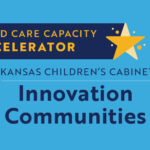A national and state partnership for a system of child well-being
Kansas has been selected for Thriving Families, Safer Children: A National Commitment to Well-Being – Round Two, which will support the state’s ongoing work to transform the child welfare system into one focused on child and family well-being.
Thriving Families, Safer Children is a partnership between public, private, and philanthropic organizations that are working together, along with parents, youth, and communities, to create a more just and equitable child and family well-being system that benefits all children and families. The initiative concentrates on breaking harmful intergenerational cycles of trauma and poverty by rethinking how child welfare systems function to prioritizing strengthening families and building resiliency, rather than separating families. Kansas is one of 18 states or jurisdictions selected to participate in round two.
“The safety and well-being of children in Kansas is my top priority,” said Kansas Governor Laura Kelly. “Essential to this is helping biological families stay intact and preventing children from entering the foster care system. Through our participation in Thriving Families, Safer Children, we will develop strategies to address systemic barriers to creating a well-being system; establish robust networks of community-based primary prevention supports; and harness the expertise of families, youth, and communities to reshape child welfare in Kansas.”
National partners in this work include:
- United States Children’s Bureau
- Casey Family Programs
- Annie E. Casey Foundation
- Prevent Child Abuse America
Kansas partners include:
- Kansas Children’s Cabinet and Trust Fund
- Kansas Department for Children and Families
- Kansas Children’s Service League
- Kansas State Department of Education
- Kansas Department of Health and Environment
- The University of Kansas
- Individuals with lived experience of the child welfare system
As part of this work, Kansas is committed to combatting, ameliorating, and preventing racial inequity and to promoting equity, access, inclusion, and engagement. The state’s objectives are:
- Address systemic barriers to create a well-being system in Kansas.
- Develop robust networks of community based primary prevention supports.
- Integrate family/youth/community expertise into design, operation, and improvement of well-being systems.
- Revise statutory definitions of neglect and mandatory reporting that clearly differentiate maltreatment from poverty.
- Align with Maternal Child Health and other public health initiatives that strengthen and support children and families.
“We are excited for this opportunity to collaborate with these national and state partners to reimagine and recreate our child welfare system into one that achieves the outcomes we all want to see: thriving children, families, and communities,”
~Melissa Rooker, Executive Director, Children’s Cabinet





